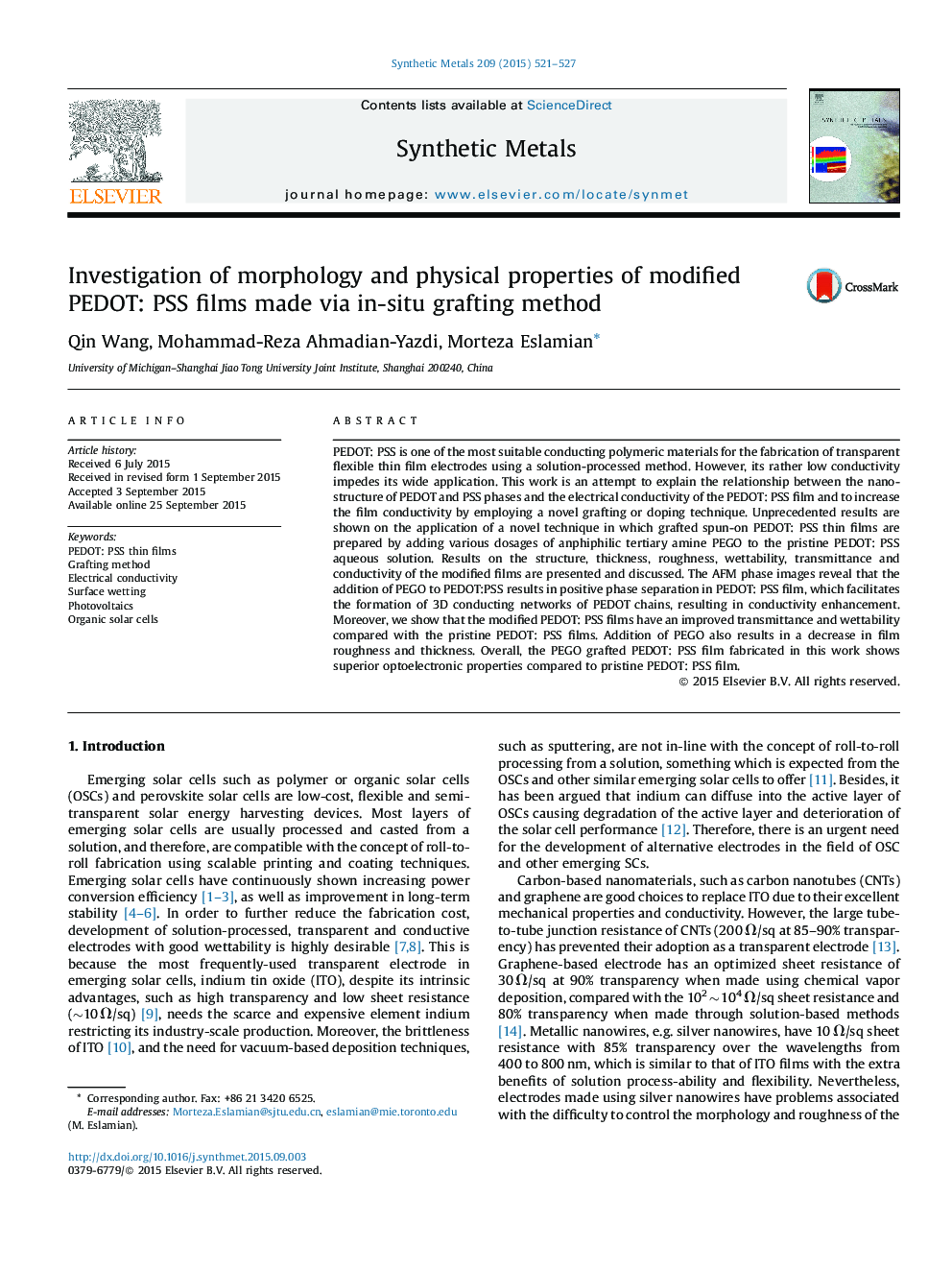| Article ID | Journal | Published Year | Pages | File Type |
|---|---|---|---|---|
| 1440538 | Synthetic Metals | 2015 | 7 Pages |
•A novel grafting method is used to liberate PEDOT phase in PEDOT:PSS films.•The grafting resulted in significant improvement in conductivity of PEDOT:PSS.•Wettability and surface uniformity of PEDOT:PSS significantly improved.•A mechanism is proposed to explain a change in nano-structure of PEDOT:PSS due to grafting.
PEDOT: PSS is one of the most suitable conducting polymeric materials for the fabrication of transparent flexible thin film electrodes using a solution-processed method. However, its rather low conductivity impedes its wide application. This work is an attempt to explain the relationship between the nano-structure of PEDOT and PSS phases and the electrical conductivity of the PEDOT: PSS film and to increase the film conductivity by employing a novel grafting or doping technique. Unprecedented results are shown on the application of a novel technique in which grafted spun-on PEDOT: PSS thin films are prepared by adding various dosages of anphiphilic tertiary amine PEGO to the pristine PEDOT: PSS aqueous solution. Results on the structure, thickness, roughness, wettability, transmittance and conductivity of the modified films are presented and discussed. The AFM phase images reveal that the addition of PEGO to PEDOT:PSS results in positive phase separation in PEDOT: PSS film, which facilitates the formation of 3D conducting networks of PEDOT chains, resulting in conductivity enhancement. Moreover, we show that the modified PEDOT: PSS films have an improved transmittance and wettability compared with the pristine PEDOT: PSS films. Addition of PEGO also results in a decrease in film roughness and thickness. Overall, the PEGO grafted PEDOT: PSS film fabricated in this work shows superior optoelectronic properties compared to pristine PEDOT: PSS film.
